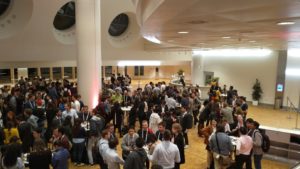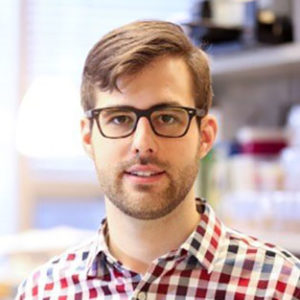Written by Darius Rackus
Do you know which country has an airport with an IATA code of “OMG”? How about when the most recent Swiss canton joined the Swiss Confederacy? Or do you know where the article first describing a miniaturized total analysis system was published? For trivia boffins and scientists in microfluidics, these were the types of questions asked at the third annual student mixer at the International Conference on Miniaturized Systems for Chemistry and Life Sciences (microTAS).
For the past three years, microTAS has been hosting networking events for postgraduate students and female faculty. This year, students were invited to a pub quiz where they could not only test their trivia knowledge but also meet peers from different labs and different countries.
Over 200 students showed up for the night, and at least 150 participated in the quiz. The one rule given was that teams had to include students from at least two different countries and students were quick to form very diverse teams. The winning team had students representing Switzerland, China, Japan, and Israel. While there was lots of Swiss chocolate to be won, the main benefit was making new connections, which can sometimes be daunting at large international conferences.
The event was hosted by the Chemical and Biological Miniaturization Society (CBMS) and prizes were sponsored by the Royal Society of Chemistry, the journal Analytical Chemistry (ACS), and Dolomite. The winning team took home microfluidics-branded hoodies and 400 g each of fine Swiss chocolate. Of course, winning isn’t everything and networking events like this are great opportunities for connecting early career researchers. Hopefully this will continue to be a fixture of future microTAS conferences.
For the curious, the answers to the questions are a) Namibia (Omega Airport), b) Canton Jura was formed and joined in 1979, and c) Manz, Graber and Widmer coined the term “µTAS” in their 1990 Sensors and Actuators B publication.
Darius Rackus (right) is a postdoctoral researcher in the Dittrich Bionalytics Group at ETH Zürich. His research interests are in developing integrated microfluidic tools for healthcare and bioanalysis












